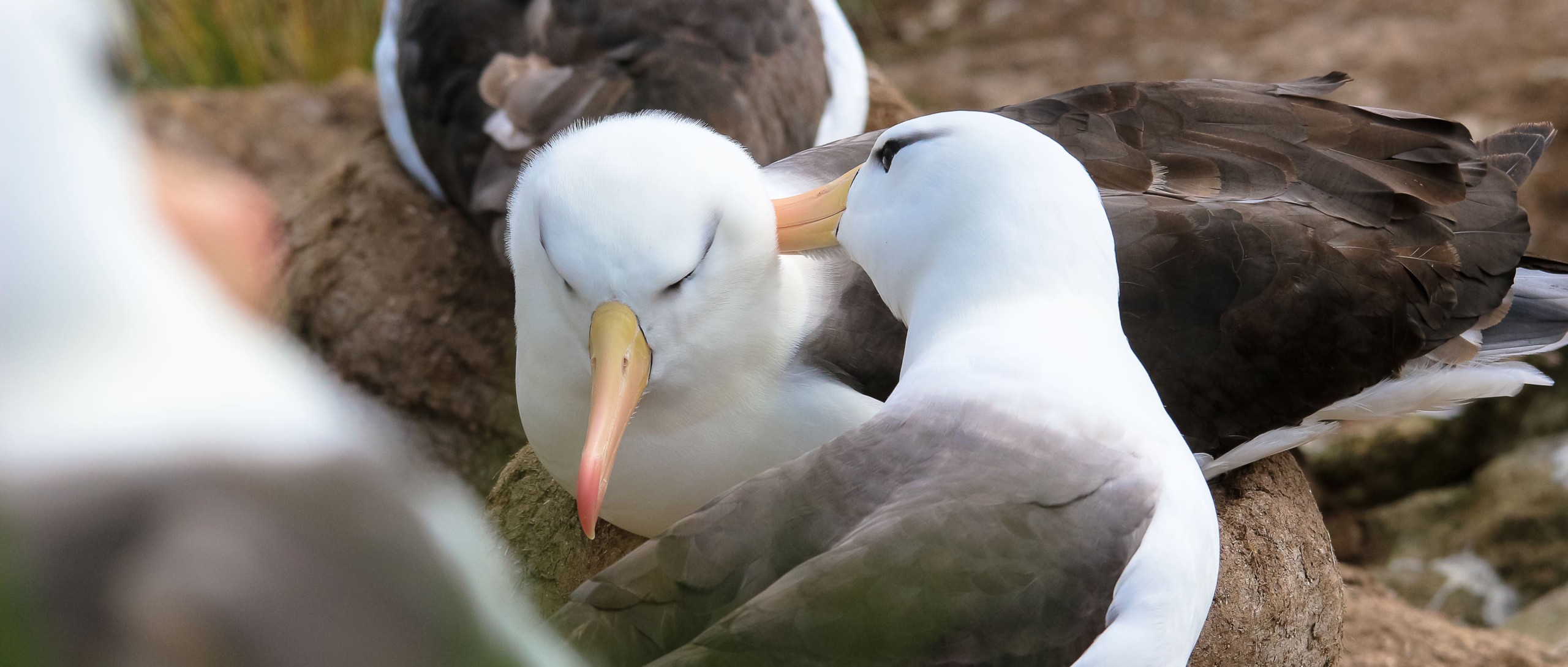LINKED PAPER
Allopreening in the Black-browed Albatross Thalassarche melanophris: an exploration of patterns and possible functions. Gillies, N., Guilford, T. & Catry, P. 2021 IBIS. DOI: 10.1111/ibi.12960 VIEW
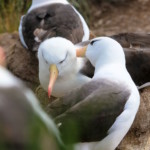 Allopreening – when one bird preens the feathers of another – is a well-known avian behaviour, often observed within mated pairs, between parents and offspring, and, less frequently, between neighbouring individuals. Speculative functions for allopreening have historically included an association with pair bonding or a role in feather hygiene (Goodman 2020, Harrison 1965), but its patchy phylogenetic distribution makes it difficult to infer exactly what its ancestral function might be. Recent evidence suggests that allopreening most commonly occurs in species exhibiting coordinated parental care and low divorce rates (Kenny et al. 2017). We aimed to study the functions of this conspicuous behaviour in a species that ticks both these boxes – the Black-browed Albatross.
Allopreening – when one bird preens the feathers of another – is a well-known avian behaviour, often observed within mated pairs, between parents and offspring, and, less frequently, between neighbouring individuals. Speculative functions for allopreening have historically included an association with pair bonding or a role in feather hygiene (Goodman 2020, Harrison 1965), but its patchy phylogenetic distribution makes it difficult to infer exactly what its ancestral function might be. Recent evidence suggests that allopreening most commonly occurs in species exhibiting coordinated parental care and low divorce rates (Kenny et al. 2017). We aimed to study the functions of this conspicuous behaviour in a species that ticks both these boxes – the Black-browed Albatross.
While Black-browed Albatross are perhaps best known for their incredible feats of flight, albatrosses as a family also exhibit some of the seabird world’s most elaborate pair displays, both when finding a new mate and when reuniting with a long-term partner. These displays encapsulate a breadth of behaviours, including vocalising, bowing, wing flapping, and, of course, allopreening (Tickell 2000). For newly-forming couples, it is clear to see why many researchers attribute these displays to the process of pair formation. But it is less clear why birds should continue to exhibit these displays once they have already embarked on their breeding attempt.
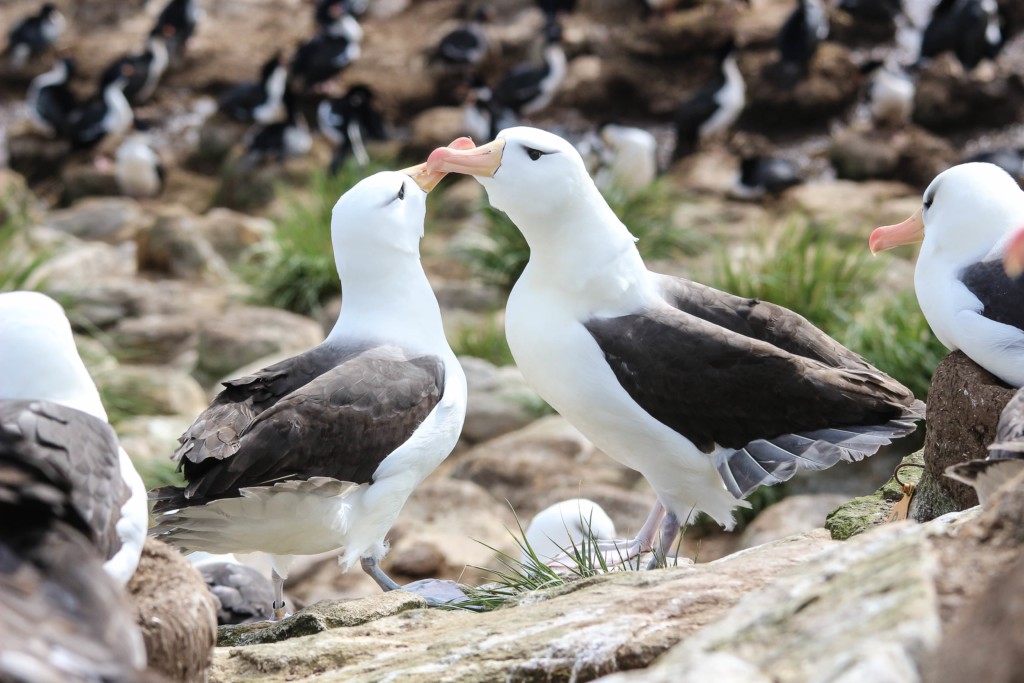 Figure 1 Two unpaired Black-browed Albatross cross bills as part of a mating display (credit: Natasha Gillies)
Figure 1 Two unpaired Black-browed Albatross cross bills as part of a mating display (credit: Natasha Gillies)
During their long period of parental care, Black-browed Albatross engaged in long nest-relief displays as one partner returns from its multi-day foraging trip at sea to relieve its partner of its parenting duties – either incubating the egg, or brooding the chick. Though these are well described (Tickell 1984), there remains little understanding of why these displays have evolved or what function they serve in the breeding behaviour of albatross.
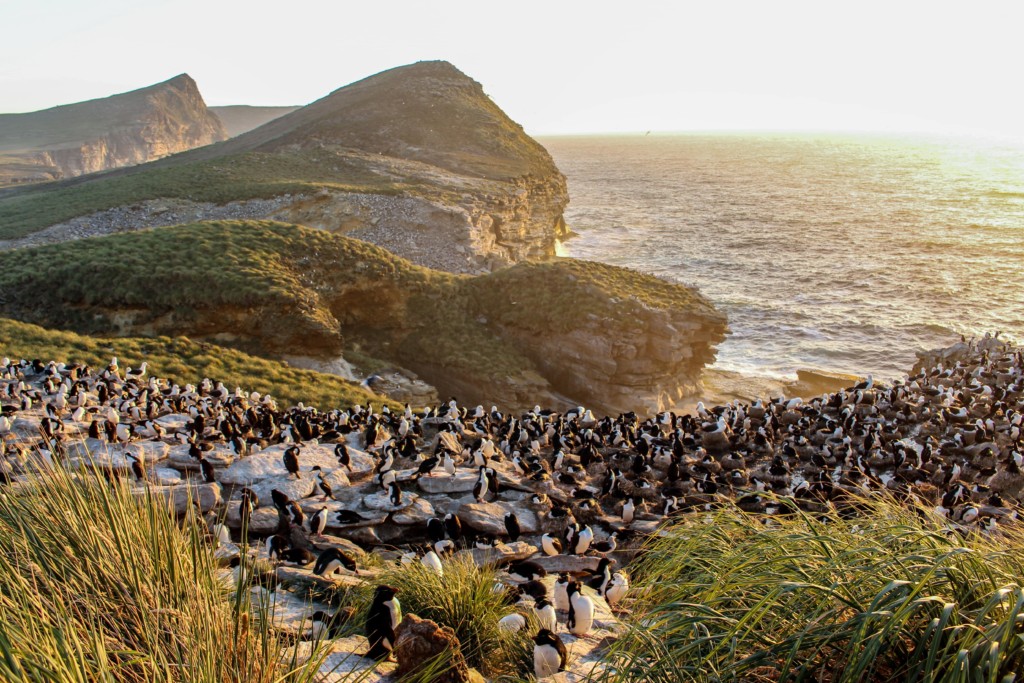 Figure 2 A view over one of the seabird colonies on New Island, Falkland Islands (credit: Natasha Gillies)
Figure 2 A view over one of the seabird colonies on New Island, Falkland Islands (credit: Natasha Gillies)
During the Austral summer of 2019/20, we conducted field observations of nest-relief displays between mated pairs of Black-browed Albatross nesting in the Falkland Islands, from late incubation to early chick rearing. We aimed to quantify facets of their display behaviour – such as how long they engage in display for, how much time each parent engages in allopreening, and who initiates the interaction – and linked this to the duration of their subsequent foraging trips, to see if we could observe any patterns in the behaviour that might suggest a role in the coordination of care.
We found that during incubation, there was an inverse relationship between the amount of time pairs dedicated to nest-relief displays and the duration of the subsequent foraging trip. In other words, the more time pairs spent displaying, the less time the outgoing bird spent at sea. We also found that the bird returning from its foraging trip to take over its duties on the nest tended to engage in more allopreening than its partner.
While with an observational study it’s important to interpret any results with caution, we proposed that these patterns could reflect an assessment function for allopreening, in which the departing parent uses the behaviour of its partner to determine whether it is sufficiently committed to providing care to the offspring. A partner who invests a lot of time interacting and seems engaged in the nest display might be signalling its dependability, and so the outgoing parent can depart for its trip to sea, safe in the knowledge that its partner isn’t going to abandon the breeding attempt in its absence.
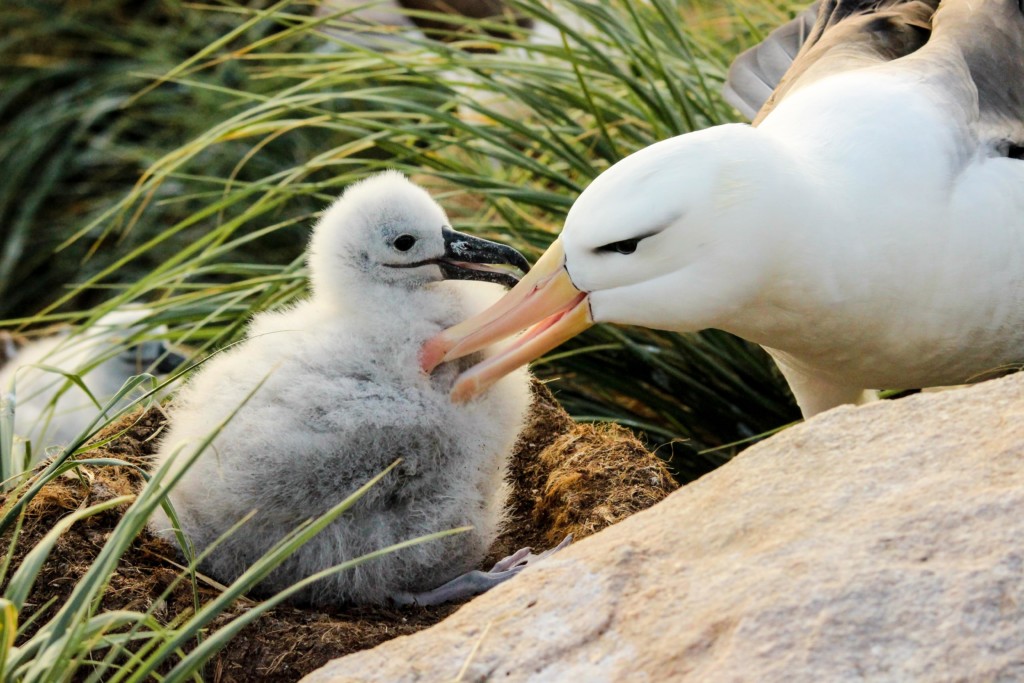 Figure 3 A returning adult Black-browed Albatross preens its chick (credit: Natasha Gillies)
Figure 3 A returning adult Black-browed Albatross preens its chick (credit: Natasha Gillies)
The inverse relationship we observed between foraging trip duration and the duration of the display might then reflect how much time it takes for the outgoing bird to be convinced to leave the nest. A bird that is in good condition, and so can happily continue to sit with the egg or chick for a long time, will need a lot of convincing (and allopreening) from its partner to leave. Some parents can be extremely reluctant to relinquish their parenting duties, and we often observed impatient returning parents physically push their partner off the nest when the handover was taking too long. Such parents will subsequently need less time at sea to feed, and so will return to the nest after a shorter trip. Conversely, a sitting parent that is in poor condition and desperately needs to return to sea will need little encouragement to leave the nest, and will probably spend more time feeding.
Our results give tentative indication that allopreening may have a specific function during the breeding season, allowing parents to assess one another’s behaviour and condition and use this to coordinate their departures from the nest. Through this, parents can work together to maximise the chances of successfully raising their offspring in an environment where extreme environmental conditions and long periods of parental care make this particularly difficult. While future experimental approaches are needed to cement our understanding of allopreening, we hope our results shed some light on potential functions for this widely observed but little-understood behaviour.
References
Goodman, G.B., Conner, S.A., Bush, S.E., & Clayton, D.H. 2020. Is allopreening a stimulus-driven defense against ectoparasites? Journal of Parasitology 106: 167-171. VIEW
Harrison, C.J.O. 1965. Allopreening as agonistic behaviour Behaviour 24: 161–209. VIEW
Kenny, E., Birkhead, T.R. & Green, J.P. 2017. Allopreening in birds is associated with parental cooperation over offspring care and stable pair bonds across years. Behavioral Ecology 28: 1142–1148. VIEW
Tickell, W.L.N. 1984. Behaviour of Black-browed and Grey-headed Albatrosses at Bird Island, South Georgia. Ostrich 55: 64–85. VIEW
Tickell, W.L.N. 2000. Albatrosses. Yale University Press.
Image credit
Top right: An adult Black-browed Albatross Thalassarche melanophris preens its incubating partner © Natasha Gillies


